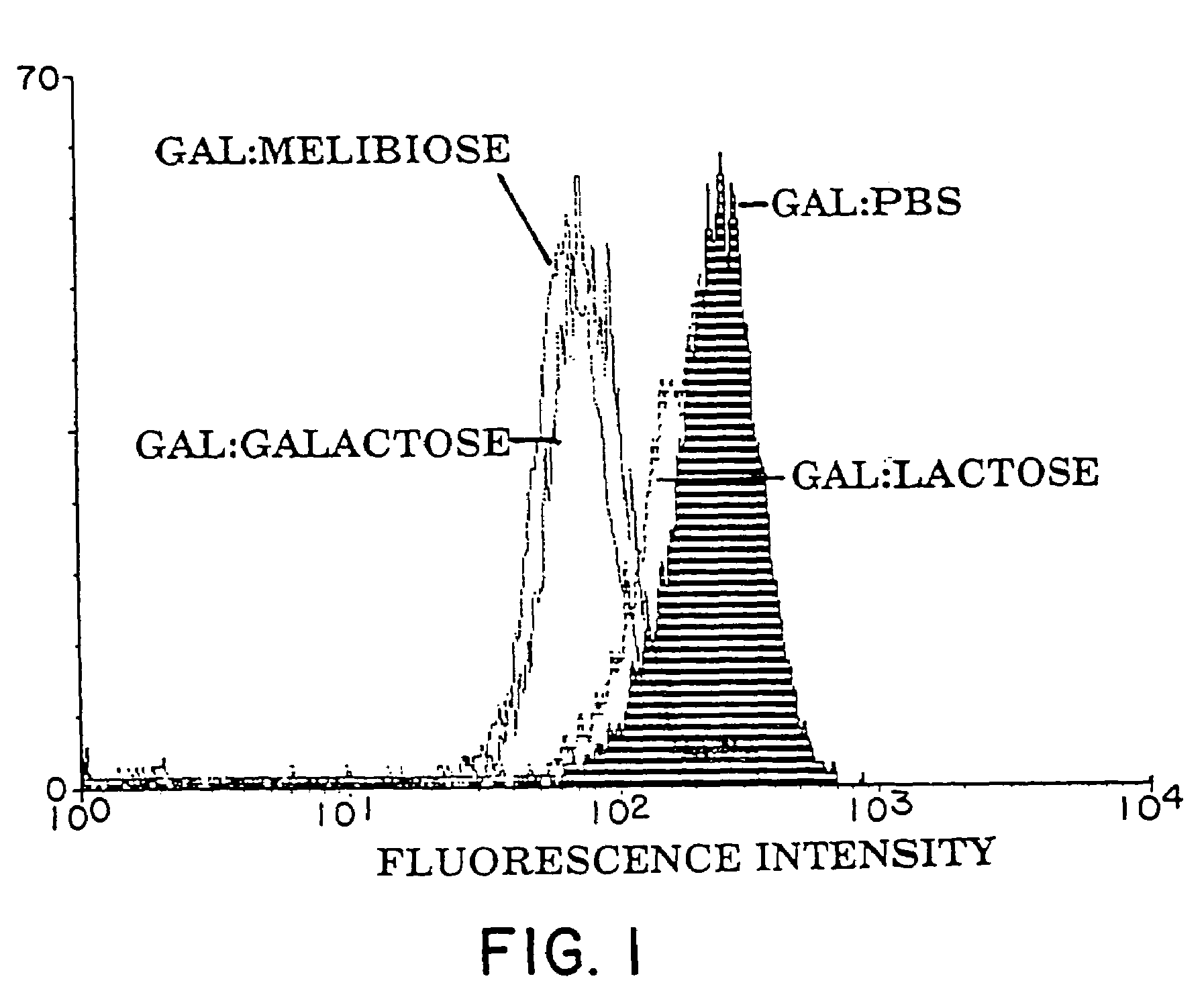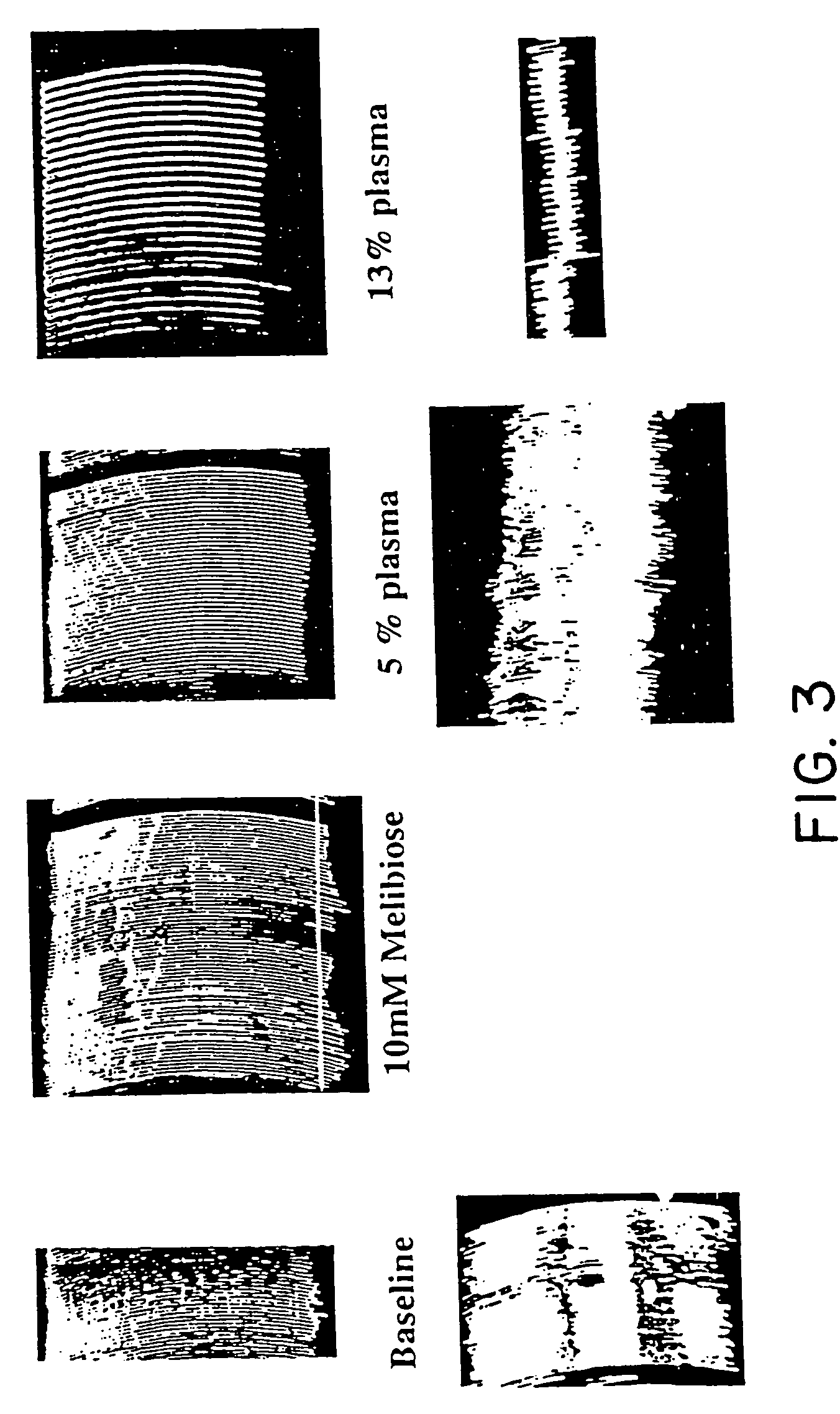Materials and methods for management of hyperacute rejection in human xenotransplantation
a technology for xenotransplantation and hyperacute rejection, which is applied in the field of xenotransplantation, can solve the problems of increasing the financial cost of dialysis in australia and new zealand, and increasing the cost of dialysis. , to achieve the effect of reducing or reducing reducing or eliminating the hyperacute rejection respons
- Summary
- Abstract
- Description
- Claims
- Application Information
AI Technical Summary
Benefits of technology
Problems solved by technology
Method used
Image
Examples
example 1
Affinity Purification of Human Anti-GAL Antibodies
[0102]Anti-GAL antibodies were purified from normal heat inactivated AB serum (from CS1 Parkville, Victoria, Australia) using the following sets of procedures.
A. Preparation of Total Anti-GAL (IgG+IgM) Antibodies
The following procedures are performed at 4° C.
[0103]1. Desalt 15–30 ml serum (in 3 ml batches) by passage through a pre-equilibrated (20 ml application buffer: 20 mM K2HPO4, 30 mM NaCl, pH 8) Econo Pac 10DG (Bio-Rad, Richmond, USA) column. Alternatively, for large scale preparations, desalt by dialysis exhaustively against application buffer.[0104]2. Wash column with 4 ml aliquots of application buffer. Collect and pool column eluates.[0105]3. Apply pooled desalted serum to a pre-equilibrated (20 ml application buffer) Synsorb 115 (galactosyl-galactose; Chembiomed, Alberta, Canada) or D(+) Melibiose-Agarose (Sigma) affinity column (5 ml–50 ml depending on the yield required).[0106]4. Collect run-through (partially anti-GAL-d...
example 2
Reactivity of IgG and IgM Anti-GAL Antibodies and Depleted Serum with Porcine Cells and Tissues
I. Cells
[0124]Reactivity of IgG and IgM anti-GAL antibodies was assessed using either porcine aortic endothelial cells (prepared by the inventors as described below) or porcine epithelial cell line LLC PK1 (PK1), obtained from the American Type Culture Collection (ATCC), Accession No. CRL1392.
A. Isolation and Culture of Porcine Aortic Endothelial Cells (PAE's)
[0125]Pigs were blood typed (using human typing reagents) to identify “O-type” pigs, i.e, pigs unreactive with antibodies to A or B human red blood cell antigens. Aortas were excised from “O-type” pigs, then transported from the abattoir to the laboratory on ice. PAE's were isolated by collagenase treatment as described by Gimbrone et al., J. Cell Biol. 60: 673–84 (1974). PAE's were cultured in RPMI medium containing 10% fetal calf serum (FCS), supplemented with 150 g / ml endothelial cell supplement (Sigma) and 50 g / ml heparin (Sigma)....
example 3
Hemagglutination of Pig RBC by Human Serum: Sugar Inhibition Studies
[0162]The methods used to investigate the hemagglutination of pig red blood cells (RBC's) by human serum was adapted from the methods described by Galili, J. Exp. Med. 160: 1579–81 (1984) and Severson, Immunol. 96: 785–789 (1966).
I. Methods
[0163]A. Media / Solution Preparation[0164]1. Human Serum Albumin (HSA) (CSL, Melbourne, Australia) (5 mg / ml) was dissolved in PBS, filter sterilized, and stored at 4° C.[0165]2. Preparation of sugars:[0166] 1 M stock solutions of sugar were prepared by dissolving the amount indicated in 100 ml of PBS. Sodium azide was added (0.02%) and solutions stored at 4° C.
[0167]
α-Lactose (4-O-β-D.galactopyranosyl-α-D-glucose36.0 gD(+)galactose18.0 gStachyose (α-D-gal-[1->6]-α-D-Glc-[1->2]-β-D-Fru)66.6 gMelibiose (6-O-α-D-galactopyranosyl-D-glucose)34.2 gSucrose (α-D-Glucopyranosyl β-D-fructofuranoside)34.2 gD-(+)-Glucose18.0 gα-D-(+)-Fucose (6-Deoxy-D-galactopyranose)16.4 g
[0168]All sugars wer...
PUM
 Login to View More
Login to View More Abstract
Description
Claims
Application Information
 Login to View More
Login to View More - R&D
- Intellectual Property
- Life Sciences
- Materials
- Tech Scout
- Unparalleled Data Quality
- Higher Quality Content
- 60% Fewer Hallucinations
Browse by: Latest US Patents, China's latest patents, Technical Efficacy Thesaurus, Application Domain, Technology Topic, Popular Technical Reports.
© 2025 PatSnap. All rights reserved.Legal|Privacy policy|Modern Slavery Act Transparency Statement|Sitemap|About US| Contact US: help@patsnap.com



